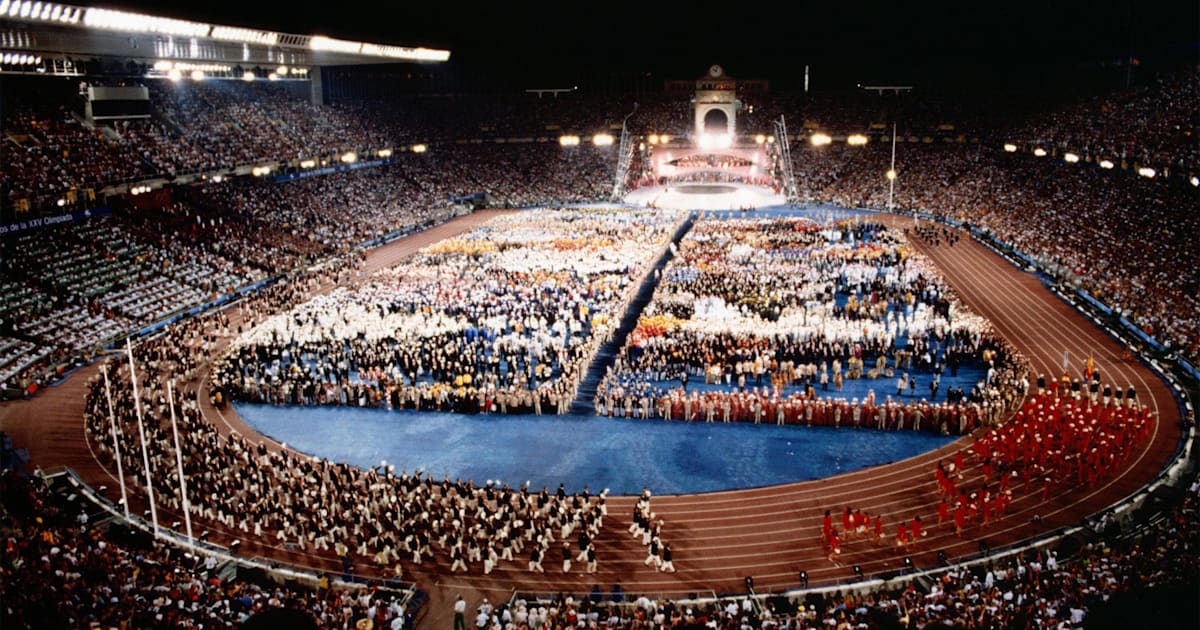Discover Pandipedia
Pandipedia is the world's first encyclopaedia of machine generated content approved by humans. You can contribute by simply searching and clicking/tapping on "Add To Pandipedia" in the answer you like. Learn More
Expand the world's knowledge as you search and help others. Go you!

Humor is challenging for AI to fully master because it requires cognitive reasoning, social understanding, a broad base of knowledge, creative thinking, and audience understanding[1]. Humor's reliance on irony, sarcasm, and cultural nuances makes tasks of humor detection, evaluation, and generation consistently challenging for AI[2].
AI requires more than understanding speech or data patterns – it must have world knowledge, comprehend local cultures and customs, accurately read room dynamics, and be capable of creating and understanding jokes rather than simply understanding what makes something amusing[3]. It is complex because generating it requires understanding human social, cultural, and emotional experiences[1].
Let's look at alternatives:
- Modify the query.
- Start a new thread.
- Remove sources (if manually added).
- Request a manual search from our human research team.

Beats Studio Buds
Promising crystal clear sound and up to 36 hours of battery life, the Beats Studio Buds include one-touch pairing with Apple and Android devices and personalized fit options with various ear tip sizes[1].

DJI Mini 3
This lightweight drone features advanced obstacle avoidance and smart flying capabilities, making it perfect for beginners and travel enthusiasts looking to capture stunning aerial footage[4].

Canon Powershot V10
A pocket-sized camera capable of filming in 4K UHD, making it ideal for aspiring content creators[1].

Anker Soundcore Motion X600
This portable speaker delivers impressive stereo spatial audio with a 50W output, designed for music lovers who appreciate quality sound wherever they go[1].

Google Pixel 8
Featuring a vibrant 6.2-inch OLED display, this smartphone is equipped with Smooth Display technology for seamless performance and high-quality visuals[4].

HP Spectre x360
A versatile laptop with a 2.8K OLED display and innovative Neural Processing Units (NPUs) for enhanced privacy and battery life[6].
Garmin Instinct Crossover Solar
A rugged smartwatch designed for adventure enthusiasts, offering a long battery life and tracking functionalities for various sports and activities[1].
LEGO Technic Sets
Interactive and engaging, these sets allow individuals to build functional models, combining creativity with engineering principles[7].
Ember Mug²
This smart mug keeps beverages at the desired temperature, ideal for those who enjoy sipping drinks slowly[4].
HP Spectre Fold OLED 17 2-in-1 Laptop
This innovative device transforms between laptop, tablet, and desktop modes, catering to a variety of usage scenarios[6].

LG CineBeam Q
A portable projector that boasts 4K resolution and a striking aluminum design, suitable for immersive movie nights[4].

Nothing Phone (1)
This smartphone features a transparent back and LED glyphs for notifications, providing a distinctive style and functionality[1].

Therabody Wave Roller
A high-tech foam roller incorporating vibration therapy to aid in muscle recovery and alleviate muscle soreness[1].

Apple Watch Ultra
This smartwatch is built for athletes, offering durability, water resistance, and extensive health and fitness tracking features[1].
Samsung HW-Q990D Soundbar
An excellent Dolby Atmos soundbar featuring an extensive speaker array for immersive audio experiences[4].

Meta Quest 3
This VR headset offers the latest in virtual reality technology, including features for gaming and immersive experiences[1].
Skydio 2 Drone
Unique for its ability to follow subjects autonomously, making it perfect for capturing dynamic shots with minimal effort[4].

PetCube Bites 2 Lite
A pet monitoring device that allows you to see, talk to, and dispense treats to your pet remotely via a smartphone app[6].

Vaha S Fitness Mirror
A smart fitness mirror that provides access to workout classes and personal trainers, perfect for home fitness enthusiasts[1].

Theragun Prime
A percussive therapy device designed to relieve muscle tension and enhance blood flow, making it a good addition for fitness enthusiasts[4].
Celestron Origin Telescope
A unique telescope that connects to smart devices to help explore the cosmos from the comfort of home[6].

Nix Hydration Biosensor
A biosensor that analyzes sweat levels to provide real-time hydration data, beneficial for athletes[1].
Jackery Explorer 1000 Power Station
A portable power source ideal for outdoor events, capable of charging multiple devices at once[6].

iRobot Roomba J7
A robotic vacuum that combines vacuuming and mopping capabilities, featuring advanced navigation technologies[1].
LEGO Technic Control+
This interactive LEGO set can be controlled via an app, enhancing the building experience with technology[7].
EcoFlow Delta Pro Ultra
A powerful backup power solution for homes, capable of running essential appliances during outages[6].
Clicks Case
A smartphone case that integrates a physical keyboard, catering to those who miss tactile typing[6].

Let's look at alternatives:
- Modify the query.
- Start a new thread.
- Remove sources (if manually added).
- Request a manual search from our human research team.
Get more accurate answers with Super Search, upload files, personalised discovery feed, save searches and contribute to the PandiPedia.

Glaciers play a crucial role in shaping ecological dynamics on Earth. Their retreat due to climate change is not merely a physical alteration of landscapes; it initiates complex biological and ecological processes that influence both local and global ecosystems.
Biodiversity and Ecosystem Formation

As glaciers retreat, they expose previously covered land, creating opportunities for new ecosystems to develop. This transformation leads to a rapid colonization by a spectrum of organisms starting with microorganisms and progressing to more complex life forms. Research has shown that life quickly moves into these new habitats, beginning with microorganisms such as bacteria and algae that thrive in the harsh conditions left behind by melting glaciers. Over time, hardy pioneer species like lichens, mosses, and grasses establish themselves, which pave the way for more diverse plant communities[5].
The retreat of glaciers encourages an intricate process of ecological succession, where an initial increase in biodiversity is observed. For example, studies indicate that in the early stages of glacier retreat, there is a significant rise in plant diversity, which subsequently enhances the diversity of associated animal life, including pollinators[4][5]. Specifically, within the first few decades post-retreat, scientists have documented an increase in both plant and pollinator diversity. Pollinators, such as bees and butterflies, depend heavily on the diversity of flowering plants that emerge in the glacier's foreland, illustrating the interconnectedness of these species within their ecological niche[4].
Impact on Water Resources

Glaciers also serve as vital freshwater resources. As they encapsulate substantial amounts of freshwater, they are significant for maintaining river flows and ecosystems during warmer months when snowmelt occurs. The meltwater from glaciers feeds rivers, which rely on consistent flow for the survival of numerous species and the health of ecosystems. Their decline poses a direct threat to the water resources of hundreds of millions of people and to biodiversity, especially in regions dependent on glacier-fed streams[2].
Climate Regulation and Soil Development

Moreover, glaciers contribute to Earth's climate regulation. They reflect sunlight and help maintain cooler temperatures in their surroundings. As glaciers shrink, the albedo effect diminishes, leading to increased absorption of heat by the Earth's surface, which further accelerates climate change. This progressive warming impacts not just the immediate area around the glaciers, but also broader climate patterns that affect ecosystems worldwide[1][3].
The newly exposed grounds left by melting glaciers undergo significant changes in soil properties over time. Key environmental traits such as soil temperature and nutrient availability evolve as more complex biological communities establish themselves[3]. Microorganisms play a vital role in this process by breaking down organic matter and aiding the development of fertile soils, which further facilitate the growth of plant life. This biodiversity enhances ecosystem services, such as nutrient cycling and carbon capture, crucial for combating climate change[5].
Plant-Pollinator Interactions

The relationships between plants and pollinators are also significantly influenced by glacier dynamics. Early in the succession process, as pioneer plants establish, they provide critical resources for pollinator species, which in turn help in plant reproduction through pollination. Studies have shown that initial increases in plant diversity stimulate pollinator success, creating robust interactions that foster healthy ecosystems[4][5]. However, as plant communities transition towards a state dominated by woody species, a decline in interaction diversity and overall biodiversity often follows, illustrating the delicate balance maintained within these ecosystems[4].
Conservation Implications
As glaciers continue to recede at alarming rates due to anthropogenic climate change, understanding their ecological role becomes increasingly urgent. The loss of glaciers corresponds to the loss of unique habitats for specialized species, which are often poorly adapted to change, making them vulnerable to extinction. Hence, conservation strategies must consider both the protection of glacial environments and the management of biodiversity in newly formed ecosystems[4].
Efforts to enhance and sustain plant diversity in these ecosystems can help mitigate the negative effects of glacier retreat. By prioritizing areas of high interaction diversity, such as pioneer grasslands, conservation strategies can foster ecological resilience, promoting healthier ecosystems capable of withstanding ongoing climate change impacts[4][5].
Conclusion
Glaciers are not just significant ice formations; they are catalysts for biodiversity and ecological dynamics. Their retreat triggers a cascade of changes that affect species interactions, nutrient cycling, and water resources. Understanding and protecting these processes are crucial in the face of climate change, ensuring the continued resilience and vitality of our planet's ecosystems.
Let's look at alternatives:
- Modify the query.
- Start a new thread.
- Remove sources (if manually added).
- Request a manual search from our human research team.
Early Influence and Ambitions

The Trinity House, originally a guild or fraternity of sailors in Deptford Church, grew into a rich and powerful corporation, especially by the reign of James I[1]. It was dedicated to the honor of the Trinity, and it watched over the interests of all concerned in shipping[1]. This organization was ambitious, jealous of its powers, and greedy to usurp more[1]. It gained superintendence of buoys and beacons and alleged that it possessed the sole right of establishing lighthouses[1].
Squabbles and Opposition to Private Ventures
A conflict soon arose between the Crown, the Trinity House, and private lighthouse builders concerning the right to establish lighthouses and collect tolls[1]. The Trinity House asserted that this right was vested in them by various charters and Acts of Parliament[1]. Wealthy shipowners and colliery owners became alarmed by the number of lighthouse projects, preferring the risk of losing a ship or two to paying regular charges for navigation safety[1]. This view was shared by the Trinity House Board[1].
Debates, Legal Opinions, and Limited Progress
Debates in Parliament and discussions in the Privy Council ensued, with the general impression that the Trinity House was charged with the erection and maintenance of coast lights but could not impose rates without a special patent or license from the Crown[1]. The Crown could give this license to the Trinity House or any private individual[1]. Private lighthouse schemes were opposed with ruthless vigor by the Trinity House, which was in pleasant contrast to the corporation's present watchful care, perfect system, and public spirit[1]. Schemes for lighting locations such as the Lizard, St. Catherine's, the Forelands, the Goodwins, Dungeness, the Spurn, and the Farne Islands were condemned as needless, useless, dangerous, a burden, and a hindrance to navigation[1].
Lighthouse Construction Despite Opposition
Despite the opposition, lighthouses were built in considerable numbers, with rates being gathered, and, by the first half of the seventeenth century, signals to mariners broke forth from many dangerous headlands[1]. These were not in positions requiring great engineering skill, and reefs and shoals far out at sea remained unmarked until recent times[1]. The Eddystone lighthouse, fourteen miles from shore, was the first great engineering triumph, and Winstanley deserves credit for erecting a lighthouse there[1].
Floating Lights and Shifting Opinions
Floating lights, or lightships, were projected as early as 1623, with another proposal, as a novelty, half a century later at the Nore[1]. The Trinity House laughed at the suggestion, and the Nore remained without a light until around 1730, when the first lightship was anchored there[1]. The utility of the corporation was manifested in many other ways, despite its 'lighthouse policy' being bad and illiberal[1]. The corporation dissuaded the king from building a 'big ship' merely for show because no existing port could take such a ship and no anchor or cable would hold her[1].
Restoration Era and Charity

During the struggle between the King and Parliament, the board was loyal to the former and was superseded in its authority by a committee[1]. With the restoration of Charles II came a restoration of the ancient privileges of the Trinity House, watched over by General Monk as master[1]. Other famous men presided over the corporation somewhat later, including Samuel Pepys[1]. Throughout this time, the corporation's charities were not forgotten, enlarging almshouses and organizing means for the relief of aged seamen[1].
Shift Towards Public Service
A little more than a century later, the lighthouse policy of the Trinity House had entirely changed[1]. The board no longer thwarted lighthouse proposals but was proposing them itself, helping sailors by demanding good and steady lights from private owners for the dues they paid and furthering projects for improving lighthouse luminants[1]. The corporation was viewed as a public-spirited institution laboring in the interests of navigation[1].
Acquisition of all Lighthouses
The result was inevitable[1]. In 1836, privately maintained lights were extinguished, and the entire control of the lighthouse system was handed over to the corporation[1]. The corporation's only desire for the entire control of English lighthouses was that the very best should be done in regard to their management[1].
Let's look at alternatives:
- Modify the query.
- Start a new thread.
- Remove sources (if manually added).
- Request a manual search from our human research team.

Terence Tao, a renowned mathematician, was born in Adelaide, Australia in 1975[2][3][4][5][6]. Known for his exceptional mathematical abilities from a young age, Tao submitted his first research paper at 15[2]. By the age of 24, he became a full-time professor at UCLA, where he primarily works in mathematical areas[6]. Tao's groundbreaking work in mathematics, including contributions to areas such as partial differential equations, combinatorics, and harmonic analysis, has earned him prestigious accolades like the Fields Medal in 2006[2][3][4][5]. He is best known for proving the Green-Tao theorem with Ben Green, showcasing his originality and collaboration skills[3][5]. Tao's work continues to have a significant impact on the field of mathematics, solidifying his reputation as one of the greatest living mathematicians[1][4]. Apart from his academic pursuits, Tao enjoys chess, music, and spending time with his family[4].
Let's look at alternatives:
- Modify the query.
- Start a new thread.
- Remove sources (if manually added).
- Request a manual search from our human research team.

The Barcelona Olympics of 1992 were relevant for several key reasons. Firstly, they marked a significant moment in the global political landscape, being the first Games since 1972 without any boycotts. This was largely due to the geopolitical changes following the fall of the Berlin Wall and the dissolution of the Soviet Union, which allowed many newly independent nations, such as Latvia, Lithuania, Estonia, Croatia, and Bosnia and Herzegovina, to participate for the first time as separate countries[1][2][5].
Secondly, the event had a profound impact on the city of Barcelona itself. The Games catalyzed urban transformation, with significant improvements in infrastructure, public spaces, and the local economy. For example, the creation of two miles of beachfront, improvements in transport networks, and the regeneration of neighborhoods like Poblenou demonstrated a holistic approach to urban development that has been studied as a model for other cities[3][4]. The nearly 95% investment in transport and infrastructure was a major aspect of this transformation[3].
Moreover, the Games showcased a commitment to inclusivity and community engagement, as seen in initiatives like the 'Sport for All' program. The involvement of volunteers, alongside the construction of sports facilities that maintained ongoing utility for the community, underscored the long-term legacy of the event[4]. The overall success of the Olympics also highlighted Barcelona's emergence as a major international tourist destination, with visits soaring from 1.7 million before the Games to 12 million by 2019[3].
In short, the Barcelona Olympics were pivotal not only for their success in sports and politics but also for their lasting influence on urban development and community spirit, making them a benchmark for future Olympic Games[1][2][3][4].
Let's look at alternatives:
- Modify the query.
- Start a new thread.
- Remove sources (if manually added).
- Request a manual search from our human research team.
Get more accurate answers with Super Search, upload files, personalised discovery feed, save searches and contribute to the PandiPedia.
Jack the Ripper
An unidentified serial killer responsible for the murders of at least five women in London during 1888, whose true identity remains a mystery[1].

Cleopatra VII
The last active ruler of the Ptolemaic Kingdom of Egypt, her burial site continues to be undiscovered, sparking significant archaeological interest[1].
Amelia Earhart
The pioneering aviator who disappeared over the Pacific Ocean in 1937 while attempting to circumnavigate the globe, with ongoing speculation about her fate[11].
Albert Einstein
Known for his groundbreaking physics theories, his complex personal life and philosophical views continue to intrigue many[2].
Kasper Hauser
A mysterious boy found in Nuremberg in 1828, claiming to have been raised in isolation; his origins and murder in 1833 are still subjects of intrigue[3].
D.B. Cooper
A hijacker who vanished after parachuting out of a plane with ransom money in 1971, leaving behind an unsolved aviation mystery[9].
John F. Kennedy
The assassinated U.S. President whose death has fueled numerous conspiracy theories and political intrigue[13].

King Arthur
A legendary figure whose historical existence lacks definitive evidence, lending to numerous myths and tales[7].
George Mallory
A climber who disappeared on Mount Everest in 1924 while attempting to reach the summit; the circumstances of his death remain a mystery[10].
Mary Celeste
A ship found abandoned in 1872 with the entire crew vanished, spurring theories of piracy and supernatural events[1].
Marie Antoinette
The Queen of France whose scandalous life and execution during the French Revolution are shrouded in intrigue[1].
M. Chouchani
An enigmatic Jewish teacher who influenced notable students like Elie Wiesel but whose origins remain obscure[5].
Shanti Devi
An Indian girl who claimed to remember her past life at the age of four, capturing the attention of researchers into reincarnation[3].
Edgar Allan Poe
The author’s mysterious death and the themes present in his writings contribute to his enigmatic reputation[2].
Marilyn Monroe
The iconic actress whose likely suicide was surrounded by speculation about her relationships and connections, fueling conspiracy theories[13].
Green Boots
The nickname for a corpse on Everest, believed to have been an Indian climber, whose identity and fate remain uncertain[5].
Joan of Arc
This national heroine of France claimed to have received visions directing her to lead France, and she was burned at the stake, creating an enigmatic legacy[2].
Nikola Tesla
The inventor and electrical engineer known for his eccentricities and revolutionary ideas, whose life has fueled both admiration and speculation[2].
Madeline McCann
The child who vanished while on vacation with her family in Portugal in 2007, leading to a high-profile ongoing investigation[11].

George Psalmanazar
A mercenary who claimed to be from Formosa but is suspected of having fabricated much of his story, leading to questions about his true identity[3].
Solomon Northup
A free man kidnapped and sold into slavery whose story and fate remains a poignant part of American history[10].

Howard Hughes
The reclusive American business magnate and filmmaker who withdrew from society in his later years, leading to speculation about his life[6].
Nikola Tesla
A brilliant inventor whose mystique is compounded by his eccentric behaviors and innovative contributions to electrical engineering[2].
Elizabeth Short (Black Dahlia)
Murdered in Los Angeles in 1947, her gruesome death remains unsolved and continues to be a subject of fascination[7].
Percy Fawcett
The British explorer who vanished in the Amazon jungle in 1925 while searching for a legendary lost city, embodying the spirit of adventure and mystery[7].
Man of the Hole
The last known member of an Indigenous tribe in the Amazon discovered in 1996, whose identity remains unconfirmed and is symbolic of the vanishing cultures[5].
Bella in the Wych Elm
The unidentified middle-aged woman found murdered in England in 1943, whose identity and the surrounding circumstances remain unsolved[5].
Let's look at alternatives:
- Modify the query.
- Start a new thread.
- Remove sources (if manually added).
- Request a manual search from our human research team.

The themes of 'Pride and Prejudice' by Jane Austen include love, pride, prejudice, class, and family dynamics.
Love: The novel emphasizes the importance of marrying for love rather than for wealth or status. Elizabeth Bennet and Mr. Darcy's relationship epitomizes true love overcoming various social obstacles, showcasing the journey toward understanding and mutual respect. Austen critiques marriages based solely on financial security, illustrating this through characters like Charlotte Lucas and Lydia Bennet, who prioritize independence and reputation over genuine affection[1][3].
Pride and Prejudice: The title itself encapsulates these themes, with characters like Darcy embodying pride due to his social rank, while Elizabeth displays prejudice based on her initial judgments of him. Their respective biases create significant misunderstandings that they must overcome for their relationship to evolve[1][3][4].
Class: Austen addresses the rigid social hierarchy of the Georgian era, criticizing how status affects characters’ interactions and relationships. Characters like Lady Catherine and Mr. Collins are portrayed as embodying the negative attributes of class obsession, while Darcy's character development illustrates that virtue transcends social status[2][3].
Family: The family unit is central to the narrative, influencing the characters' choices and societal standing. The Bennet sisters' relationships, particularly among Jane and Elizabeth, highlight the strength of familial support, while the negative example of Lydia's actions shows how family reputation can impact individual futures[2][4].
These intertwined themes create a rich tapestry that critiques societal norms while exploring individual character growth throughout the novel.
Let's look at alternatives:
- Modify the query.
- Start a new thread.
- Remove sources (if manually added).
- Request a manual search from our human research team.

The mobile gaming industry is experiencing rapid evolution driven by technological advancements, shifting player preferences, and innovative monetization strategies. As we look into 2024, several key trends are poised to shape the future of mobile gaming.
Growth and Market Performance

The global mobile gaming market is on track to reach approximately USD 100.54 billion in 2024 and is anticipated to grow to USD 164.81 billion by 2029, representing a compound annual growth rate (CAGR) of 10.39%[1]. In the first half of 2024, the market saw a year-on-year revenue growth of 4.7%, indicating a cautious recovery post-pandemic challenges[8].
Technological Advancements
Integration of AI and Cloud Gaming
Artificial intelligence (AI) continues to play a pivotal role in game development. Around 87% of game creators now utilize some form of AI in their development processes[2]. Generative AI tools help create content, enhance gameplay, and address player behavior[2]. The rise of cloud gaming services further democratizes access to high-quality gaming experiences, allowing players to stream games without the need for expensive hardware[7].
Enhanced User Experiences and Immersive Technologies
.png)
The mobile segment is witnessing a significant push towards augmented reality (AR) and virtual reality (VR) gaming, creating immersive experiences[7]. Devices such as Apple’s Vision Pro are setting new standards, allowing gamers to interact with digital content in their real environment[7]. Enhanced haptic feedback technologies are also improving player engagement by making experiences more tactile and realistic[7].
Monetization Models Evolving
Hybrid Monetization Approaches
Developers are increasingly adopting hybrid monetization strategies that combine in-app purchases (IAP) and in-app advertising (IAA) to create diverse revenue streams[5][9]. This model caters to players who may prefer different experiences—those willing to pay for premium content and those who prefer ad-supported gameplay.
Subscription Services on the Rise

Mobile gaming subscriptions are becoming more prevalent, with services like Netflix and Apple Arcade providing new game offerings for their subscribers. Subscription services may represent 11.6% of total gaming industry revenue by 2027, making it a vital area for growth[2][9]. As players become familiar with subscription models through streaming services, there is a growing acceptance of similar offerings in mobile gaming.
Shifting Player Preferences
The Rise of Hybrid Casual Games
The popularity of hybrid casual games is surging as they blend elements of hyper-casual games with mid-core features, appealing to a broader audience. These games have shown a 30% increase in revenue over the past year, proving more engaging and retaining players better than traditional hyper-casual titles[9]. This shift signifies the industry's recognition of the need to maintain player interest through enhanced gameplay complexity.
The Shift from Hyper-Casual to More Engaging Genres
In 2023, hyper-casual games saw a 14% decline in downloads, while hybrid-casual games boasted improved engagement metrics[9]. The balance between accessible gameplay and richer experiences is critical for attracting and retaining players. Additionally, genres like roguelike games are gaining traction as developers simplify their mechanics to appeal to casual players[9].
Retention and User Acquisition Strategies
User acquisition strategies are pivotal for success in a highly competitive market. The importance of retargeting users—those who may have downloaded a game but become inactive—cannot be overstated. Personalized campaigns and offers help generate interest and keep players engaged[5]. Moreover, developers are focusing on high-quality products that not only attract downloads but also increase user satisfaction and retention[3][5][8].
Live Operations and In-Game Events
Live operations (live ops) have become integral to player retention strategies, with in-game events creating excitement and ongoing engagement. Games that strategically incorporate live events and collaborations with well-known brands have seen substantial boosts in downloads and player interest[8][9]. For example, a collaboration with popular influencers can lead to notable increases in downloads, as seen with events orchestrated by well-known figures in the gaming community[9].
Cultural and Geographic Expansion
Localization and Global Reach
.png)
Many mobile game developers are recognizing the importance of localization to penetrate new markets, particularly in regions like India, Brazil, and Indonesia[4]. These growing markets offer substantial potential for expansion, especially as smartphone penetration increases. Developers are also aligning their content with local cultures and trends, ensuring games resonate with diverse audiences[9].
Sustainable Gaming Practices
.png)
The gaming industry is increasingly adopting sustainable practices, such as using recycled materials and optimizing for energy efficiency, appealing to environmentally conscious players[7]. These developments reflect a growing awareness of social responsibility in gaming and are influencing consumers' purchasing decisions.
Conclusion
The mobile gaming landscape in 2024 is characterized by a strategic focus on high-quality, engaging content, driven by technological innovation and evolving player preferences. By leveraging hybrid monetization strategies, embracing AR and VR technologies, and emphasizing sustainability, developers can position themselves for success in this competitive market. Understanding these trends will be crucial for stakeholders aiming to navigate the complexities of mobile gaming effectively.
Let's look at alternatives:
- Modify the query.
- Start a new thread.
- Remove sources (if manually added).
- Request a manual search from our human research team.
Let's look at alternatives:
- Modify the query.
- Start a new thread.
- Remove sources (if manually added).
- Request a manual search from our human research team.















































.jpg)















/arc-anglerfish-tgam-prod-tgam.s3.amazonaws.com/public/TSPPCGK7ONHBHBZB54QEETMKS4)




:max_bytes(150000):strip_icc()/howard_hughes-3209440-58e7ac1a5f9b58ef7e11e28f.jpg)






